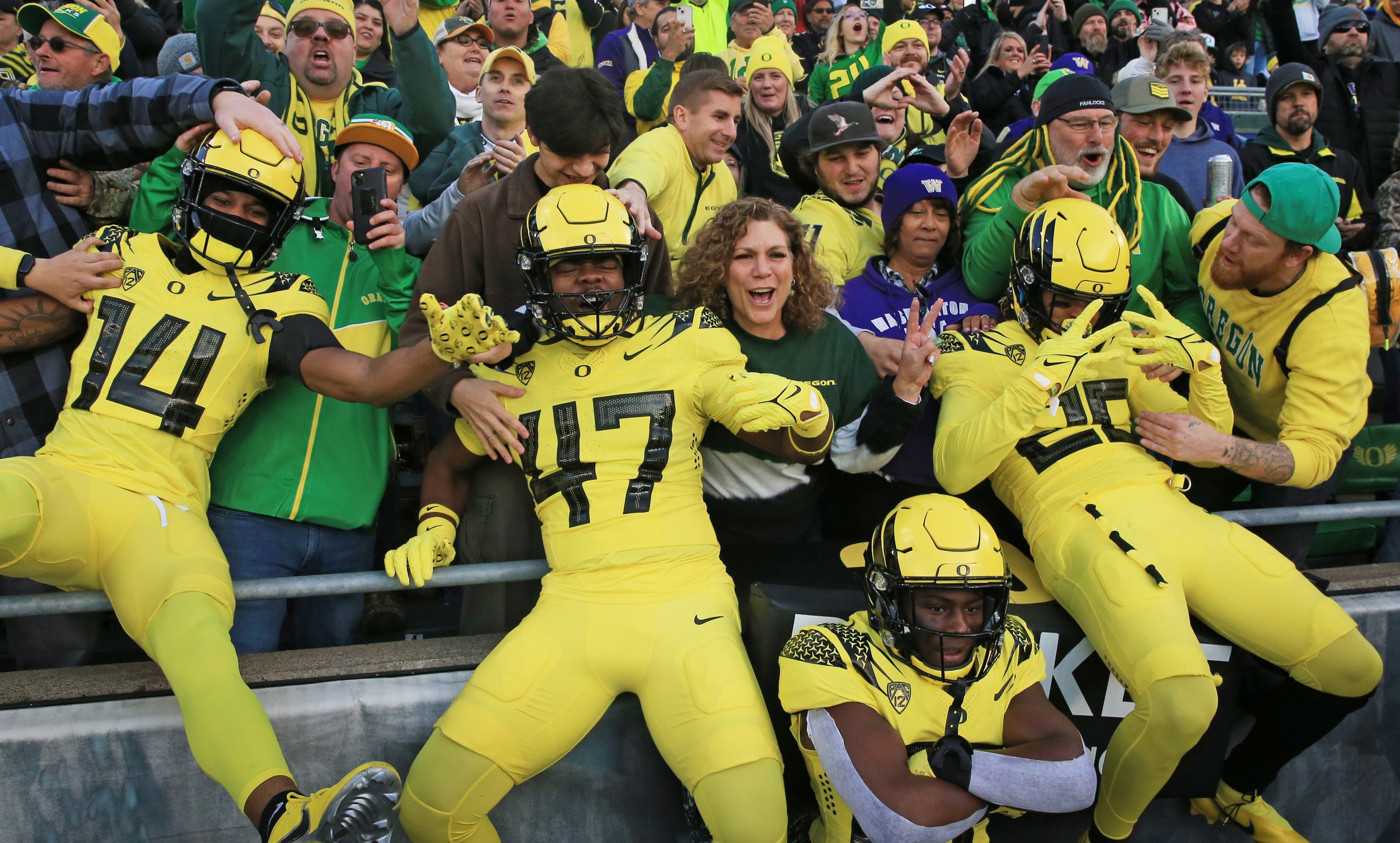Ad Disclosure

Hayes: Sources insist B1G isn’t finished raiding the Pac-12
By Matt Hayes
Published:
So we’re going to continue with this charade, this exercise in futility, despite the inevitable.
The Pac-12 may soon sign a new, undervalued media rights deal. The Pac-12 may soon believe it has saved itself for the time being.
But ladies and gentlemen, the Pac-12 isn’t long for the new college sports landscape.
“If anyone thinks the Big Ten isn’t coming back for more, they’re not following along,” an industry source told Saturday Out West this week.
The official end of the wildly underrated Pac-12 arrives when the Big Ten finds a media rights partner — network or cable television, and/or a streaming service — to foot the bill for the conference to add more schools from the Pac-12.
Because the Big Ten isn’t leaving USC and UCLA alone on the West coast. It must protect its investment.
The Big Ten won’t force student-athletes from 2 of its top 5 brands to play all road conference games from 1,500 (Lincoln, Neb.) to 2,800 miles (Piscataway, N.J.) from campus. When USC and UCLA begin Big Ten play in 2024, the top 5 pecking order of Big Ten brand recognition is Ohio State, Michigan, USC, UCLA and Penn State.
And everybody else.
Just to be clear: If the UCLA women’s volleyball team is playing a game at Rutgers, that’s a round trip of 5,600 miles — or about 6.5 hours each way on a plane. That can’t be done without 2 nights in a hotel, and 3 days away from campus.
Those numbers are similar for every sport, every road trip, taken by USC and UCLA. (And every road trip taken to USC and UCLA.)
Last July, a mere week after USC and UCLA officially informed Pac-12 commissioner George Kliavkoff of their intention to join the Big Ten, Kliavkoff spoke to the travel issues USC and UCLA would face.
The money they’d make in the move, he said, would be mitigated with travel costs and academic issues for student-athletes. And he wasn’t wrong.
He also should’ve known right then that the Big Ten wasn’t done expanding, no matter how former Big Ten chameleon — I mean, commissioner — Kevin Warren spoke on a weekly basis. The Big Ten, which holds itself as a conference of elite academia, isn’t going make college life more difficult for student-athletes just for media rights billions.
You can call university presidents many things, they’re not calculatingly and purposefully adding 2 universities more than half a continent away — and leaving them on an athletic and academic island.
Warren’s move to the NFL’s Bears may have slowed the process, but the Big Ten isn’t done expanding. Not by a long shot.
Another industry source told Saturday Out West they still believe the 4 Pac-12 schools that last year told Kliavkoff they weren’t signing extended grant of media rights deals without an unfettered out to join the Big Ten — Washington, Oregon, Stanford and California — are the dream addition for the Big Ten if it can find the funding.
If it can only find funding for 2, Washington and Oregon are the preferred additions. The Action Network reported in November that Washington and Oregon held “preliminary discussions” about joining the Big Ten.
“I’m not sure it has to be an equal (Big Ten) share, either,” a second source said. “It just has to be more than what (the Pac-12) can provide. If you’re asked to accept less to survive, the choice is easy.”
As much as we’d like to think of the next round of expansion as academia related, let’s not be shortsighted: the move is also about strengthening a football conference that lags behind the SEC.
The Playoff moves to 12 teams for its final 2 years of the original contract, and will then be renegotiated for the following deal. The payout of the estimated $1.2 billion annually for the Playoff likely will be similar to the NCAA men’s basketball tournament model of “units” of money per game played.
Translation: the more games played by each conference team, the more money each conference earns.
Adding Washington and Oregon — whose odds to win the 2023 national championship are greater than every Big Ten team other than Ohio State, Michigan and Penn State — would give the Big Ten 2 legitimate football powers that not only have reached the 4-team Playoff, but are set up to consistently play November games of significance to reach a 12-team Playoff.
It also would give the Big Ten unique television markets (Seattle and Portland), and — this is hard to ignore — bring Nike founder and Oregon mega booster Phil Knight into the fold.
ESPN is the likely media rights partner for the Pac-12, but whenever a deal is complete, it won’t be enough to keep Washington and Oregon in the fold. It won’t be enough to keep the Big Ten from protecting its investment in USC and UCLA.
And once Washington and Oregon leave, the Pac-12 ceases to exist as a Power 5 conference.
The charade will finally, mercifully, end.
Matt Hayes is a National College Football Writer for Saturday Tradition. You can also hear him daily on 1010XL in Jacksonville. Follow on Twitter @MattHayesCFB